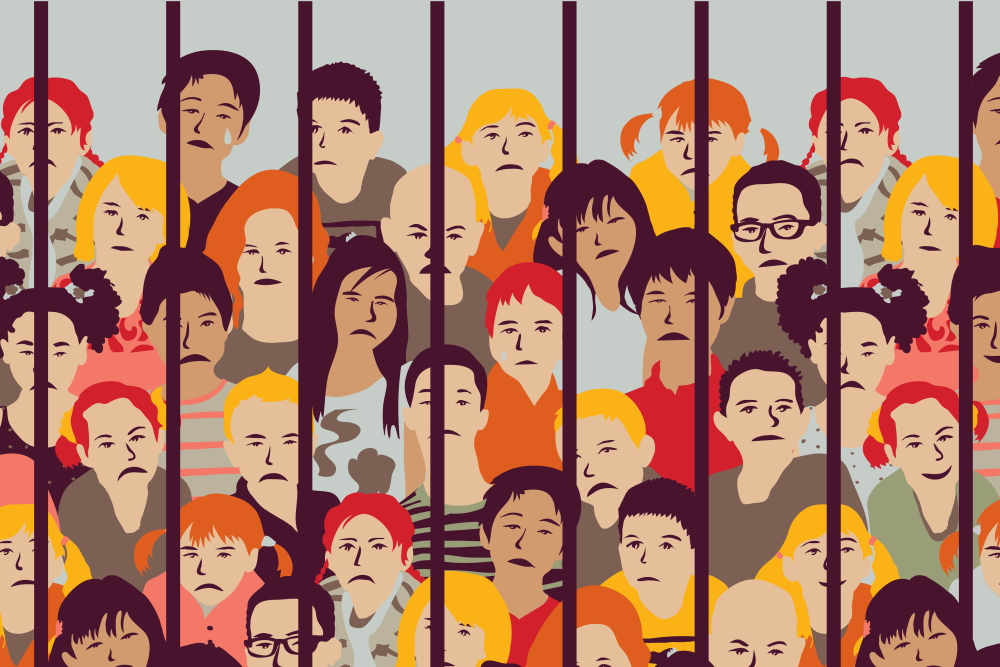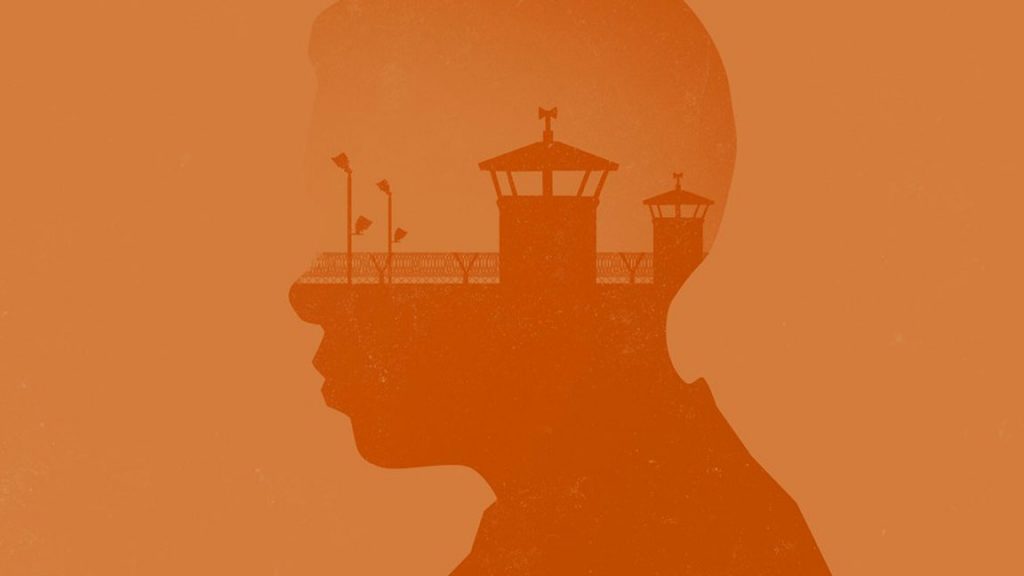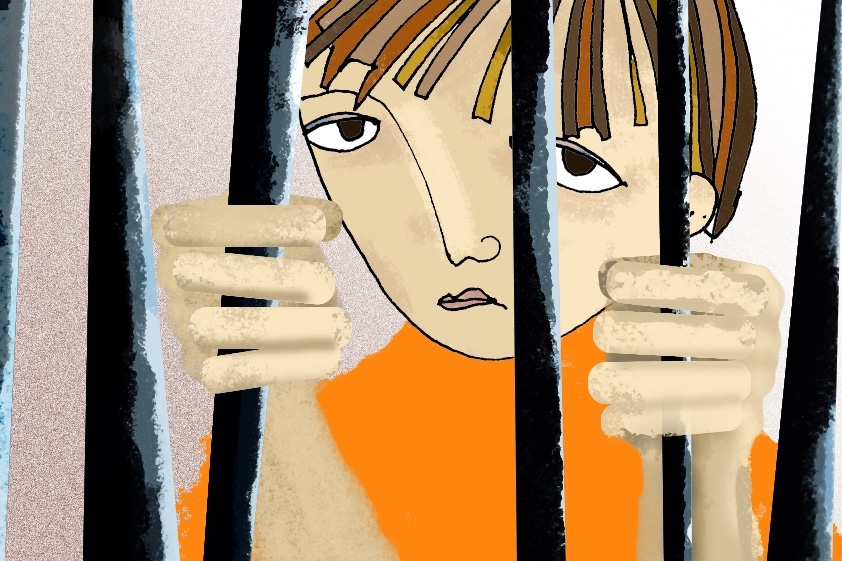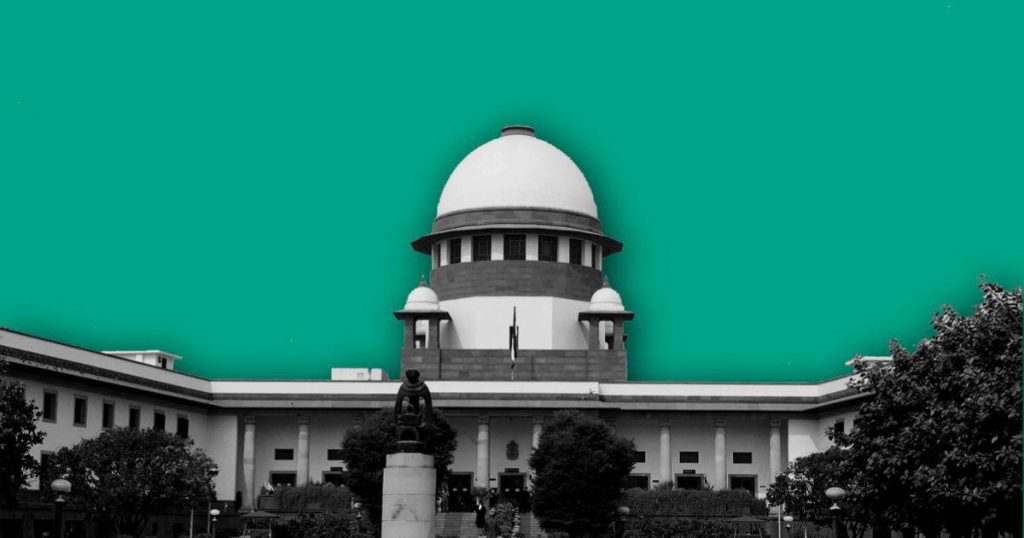
Juvenile delinquency is the criminal conduct of a person under the age of 18. For a number of reasons and circumstances, these illegal activities have recently been rapidly increasing. Major juvenile offences like robbery or murder are sometimes moved to criminal courts where they are tried as adults. Prosecutors occasionally consider “the juvenile’s age, criminal history, the nature of the crime, and the likelihood that the juvenile court will be able to help the child when determining whether to accept a transfer.” As a result of taking a harsh stance against juvenile crime, many countries have revised their juvenile statutes to make it easier to extradite young criminals to adult court.
Simply described, “juvenile delinquency” is the engagement of minors in illegal activity. A juvenile delinquent is someone who typically is “under the age of 18 and commits a crime for which an adult would have been charged and tried.” Even if it is not present in every adolescent, juvenile delinquency is therefore quite obviously a part of all those behavioural changes that occur in a person’s life as they pass through the challenging adolescent years.
Delinquency varies in severity from person to person and goes unreported until a particular action causes society to become alarmed. Radical changes in a “person’s physical, mental, moral, spiritual, sex, and social outlook” take place throughout the transitional period of adolescence. They experience frequent mood swings and develop emotional instability. Tensions, worries, conflicts, and complexity are present at the moment. Because of this, individuals engage in specific behaviour at this time to satisfy a variety of desires, which frequently leads to criminal behaviour.
Delinquent children belong to the group of exceptional children who exhibit severe social adjustment deficits and who are consequently classified as socially unacceptable or socially impaired. They behave criminally and face repercussions from the law. Because they endanger the harmony of society, social norms and moral transgressions are considered criminal acts. Although the severity and nature of the crimes can vary, they are still considered to be illegal criminal activities because they are all antagonistic. They resemble criminals and other antisocial people in this way. However, they are not considered criminals in the legal sense; rather, they are referred to as delinquents. Overall, the phrase “juvenile delinquency” refers to behaviours that have legal repercussions and might range from little misbehaviour to serious violence.
Who is Juvenile?
Anyone under the age of 18 is considered a juvenile. The legal minimum that a child must meet before their freedom can be taken away should be determined by the law. A juvenile is a child who has not attained the age at which, like an adult, he may be held legally accountable for his illegal behaviour. The child who is alleged to have committed an offence on their behalf by doing or not doing something is known as a juvenile. In legal terminology, juvenile and minor have various meanings. When discussing young criminal offenders, the term juvenile is used, whereas the term minor refers to maturity or majority. It would be profitable to turn to another source to clarify the meaning. For convenience, each State has a different definition of a juvenile.
What is Juvenile Delinquency?
The involvement of a child between the ages of 10 and 17 in criminal activity is known as “juvenile delinquency.” Delinquency is the term for a person’s behaviour when it diverges from the regular social course. A juvenile delinquent is someone who is younger than the age allowed by a statute and demonstrates behaviour that could be dangerous for him or society. Boy and female criminals under the age of 18 are considered juvenile offenders. A young person who is incorrigible or consistently disobedient is known as a juvenile delinquent.
Genesis of Juvenile Delinquency Laws in India

Over forty-four crore, children live in India, which has the biggest kid population in the world. Adolescents make up 24% of the country’s population. For the development of their social, intellectual, moral, and physical selves, they represent a sensitive age group. One of India’s largest policy challenges is safeguarding children from the pervasive prevalence of abuse. Young people are the lifeblood of society, the foundation of a progressive nation, the “crystallised energy stored reservoirs of the nation, the carriers of potential and dynamic energies, and the architects of nations” to come.
It’s important to understand how children transition from childhood to preadolescence and adolescence since distinct traits, behaviours, and issues emerge during this time. Juvenile delinquency is one of the many issues of social disorganisation brought about by modernity, urbanisation, industry, etc., and it requires the utmost attention to preserve the “social and cultural systems” of any nation. The most intriguing thing about the topic of “juvenile delinquency” is how it has always been perceived as a problem unique to modern society, even though, like adult criminal behaviour, “it has always existed in some capacity and there is no reason to believe that it won’t continue to do so in the future.”
Since the future of a country rests on the next generation, “children deserve compassion and the finest care possible to safeguard this developing human resource.” The kid is innocent when they are born, and if they are given sensitive care and attention, they will develop their physical, mental, moral, and spiritual capacities and grow into people of size and excellence. “However, unpleasant surroundings, a lack of attention to basic requirements, unsavoury company, and other abuses and temptations would spoil the child and probably cause him to become a delinquent. There is a two-dimensional basis for this occurrence.” First of all, it is unavoidable for people to break any code of conduct, whether they are adults or children. Second, the notion of juvenile delinquency as deviant kid behaviour rests on the standards established by society, or more specifically by the elders, and conflicts of values owing to generational differences are inevitable.
There has been a strong and admirable drive towards the improvement of children since the 18th century. A portion of this was focused on segregating juvenile offenders from experienced criminals and treating them amiably to reform, rehabilitate, and reintegrate them into society as future contributing members of their country. Towards the end of the 18th century, a push for the particular treatment of young criminals began. Before this, juvenile offenders received the same treatment as adult offenders. They faced the same punishments as adults after being charged in criminal courts.
Aside from that, they did their time in the same prison as other seasoned criminals. The main tragedy of the system was that it placed young offenders in contact with criminals, exposing them to contamination. The fight against treating young criminals harshly began in 1772 when specific accommodations were made for juvenile offenders in civil procedures including wills, gifts, and probate. Since minors were unable to administer their estates, their adoption of the parens patriae principle developed by the “Court of Chancery in England” required unique procedures for handling their estates. Later, similar accommodations were made for kids subject to criminal law, and eventually, the issue of juvenile delinquency became a movement.
The Apprentices Act, of 1850, was the first piece of legislation in India to prevent kids from going to jail. This Act featured provisions dealing with the interaction between employers and young people learning a skill from them as apprentices rather than the delinquent behaviour of children. However, it did include some measures, such as allowing the Magistrates to act as guardians for a kid who is impoverished or who has been found guilty of vagrancy or committing a minor offence.
The Reformatory School Act of 1876, which was later modified in 1897, took the place of the Apprentices Act of 1850. The factors that led to the establishment of separate juvenile detention facilities in the United States and England also had an effect in India. The law stipulated that juvenile criminals under the age of 15 who were convicted of crimes carrying a jail sentence would instead be sent to rehabilitation schools rather than regular prisons.
Children’s Acts, which were passed in different sections of the country starting in 1920, regulated juvenile courts and other institutions. A major piece of legislation known as the Children Act, of 1960, was passed in the year 1960. This statute was created to serve as model legislation and still does. The Act of 1960 was revised in 1978 as a result of several gaps being found in it. Not just the legislature, but also the judiciary, has voiced concern over matters involving minors. The Supreme Court made the following observations regarding some of the States’ lack of child-related Acts:
“It is deeply regretted that in Bihar, the delinquent child is inhospitably treated. Why did the finer consciousness of juvenile justice not dawn on the Bihar legislators and government? Why did the State not pass a Children Act through its elected members? With all our boasts and all our hopes, our nation can never really be decriminalised until the crime of punishment of young deviants is purged legislatively, administratively and judicatively.”

Over time, it became apparent that there was a need for universal legislation because each State had its own local Children Act to address abused and neglected children, and the Children Act of 1960 only applied to union territories. It was published by our constitutional mandate and several international documents, which state that children should not get severe penalties for misbehaviour because they will become future citizens of the world and are the most priceless resource for humanity. “A few sections of the Indian Penal Code, of 1860, declare children younger than seven to be doli incapax, with the presumption of mens rea being rebuttable for minors between the ages of 7 and 12 years.”
The Preamble of the “1959 United Nations Declaration of the Rights of the Child” pleaded with all people that “Mankind owes to the child the best it has to give” and that “The child, because of his physical and mental immaturity, needs special safeguards and care, including appropriate legal protection, before as well as after birth.” The Juvenile Justice Act, a unified law, ultimately met the constitutional and international mandate regarding children’s rights. The care and protection provisions of the Act were largely based on the “Parens Patriae” doctrine, which holds that the state bears a heavy burden of responsibility for protecting the rights of its most vulnerable and significant population by giving them “opportunities and facilities to develop to their fullest potential and by taking all necessary precautions to ensure that they do not associate with troublemakers in society.” According to the Act of 1986, a boy must be 16 years old to be a juvenile, while a girl must be 18 years old. However, this difference was eliminated in 2000 when the new Act of 2000 replaced the Act of 1986.
“On November 20, 1989, the General Assembly of the United Nations enacted the Convention on the Rights of the Child, which stipulates a set of rules that all State Parties must follow to protect the best interests of children.” The Convention places a strong emphasis on helping child victims reintegrate into society as much as possible without turning to legal action. After fulfilling the requirements of the Convention, the Indian government decided it was time to update the juvenile law to the norms outlined in the international agreements.
As a result, the “Juvenile Justice (Care and Protection of Children) Act, of 2000 was finally passed by Parliament.” By defining a juvenile or child as someone who has not reached the age of eighteen, it eliminated the age gap. The judiciary has concurred with the legislature’s decision to raise the age of juvenility, as noted by Justice Bhagvati of the Supreme Court, “Gerontocracy in a silent manner indicates that like a young plant, a child takes roots in the environment where it is placed. However good the breed is if the sapling is placed in the wrong setting or an unwarranted place there would not be the desired growth. The same is the situation with the human child.”
Two times, in 2006 and 2011, the Act of 2000 was changed to fix operational flaws and make the law more kid-friendly. “Inadequate facilities, poor care and rehabilitation measures in Homes, a high case backlog, delays in adoption due to improper and incomplete processing, a lack of clarity regarding the roles, responsibilities, and accountability of institutions, and insufficient provisions to address crimes against children like corporal punishment were some of the problems that surfaced during the implementation of the Act.” The Juvenile Justice Act of 2000’s current rules and system are inadequate to deal with juvenile offenders in this age range, as seen by the rise of cases of crimes committed by kids between the ages of 16 and 18 in recent years.
According to data gathered by the “National Crime Records Bureau (NCRB),” crimes committed by children between the ages of 16 and 18 have grown, particularly in some categories of serious offences. It was suggested to repeal the current law and reenact complete legislation because the Act of 2000 needed to undergo several adjustments to address the difficulties raised above. Thus, the current “Juvenile Justice (Care and Protection of Children) Act, 2015,” was created “to ensure that children in challenging situations receive the proper care, protection, development, treatment, and social reintegration by using a child-friendly approach while keeping the child’s best interests in mind.”
Case Laws on Juvenile Delinquency

Arnit Das v. State of Bihar
In this case, the plaintiff was found guilty of murder by Section 302 of the IPC. The murder occurred on September 5, 1998. The plaintiff stated that he was born on September 18, 1982. As a result, he qualifies as a minor and is protected by the Juvenile Justice Act. As a result, the Additional Chief Judicial Magistrate of Patna sent him to a juvenile home.
However, following the Medical Board’s assessment, it was eventually determined that the youngster was older than 16 years old. What would be the juvenile’s custody and care eligibility age was the issue before the highest court. Either the current age or the age at which the crime was committed will be considered.
According to their illustrious Supreme Court, social justice is a component of juvenile justice. Due diligence must be exercised while a juvenile is being investigated, questioned, and tried since the prevention of delinquency is under the purview of social justice. There, the age required by the laws to qualify as a juvenile was 16 for boys and 18 for girls. The date the offence was committed is not important for care and custody, according to the court.
Raju v. State of Haryana
In this instance, on September 14, 2000, a fifteen-year-old woman and her one-year-old brother were walking by the fields. At that point, the appellant Raju and two other individuals, Raju and Raja, stopped her and took her to a nearby field where the other two individuals raped the woman in a group while the appellant was outside the field and not a part of the act.
After being found guilty by section 376(2)(g) IPC, all three accused were sentenced to ten years in jail. After receiving this sentencing, the appellant filed a motion with the High Court claiming that because the offence was committed when he was younger than 18, he is qualified to use the JJ Act of 2000.
The honourable high court inquired about and verified the appellant’s age and discovered that his actual date of birth is July 12, 1984, making him 16 years, 2 months, and 2 days old at the time of the offence. As a result, the appellant complies with the requirements outlined in Sections 2(k) and 2(l) of the JJ Act 2000.
In addition, the guy is covered by sections 7-A and 20. The juvenile has already served six years in prison, according to the court, and under JJ Act 2000 section 15(1)(g), a juvenile may be transferred to a special home for three years. Therefore, the appellant was let go.
Conclusion
In 2011, the “Ministry of Women and Child Development” began considering bringing about several desired modifications, and a process of consultation with different stakeholders was started. A draft bill in this regard was produced, was under review by the “Ministry of Law and Justice, and was posted on the Ministry of Women & Child Development’s official website for public comment in June 2014. The public’s image of the Act was significantly impacted by the Delhi gang rape case in December 2012.”
In contrast to the truth, the media emphasised that the young person implicated in this case was the “Most Brutal” of all those named as suspects. The Supreme Court of India heard eight writ petitions that claimed the Act and several of its sections were unconstitutional in the second week of July 2013 and rejected them, ruling that the Act was valid. When the Union of India indicated that there is no proposal to lower the age of a juvenile, the Supreme Court rejected requests to lower the age of juveniles from 18 to 16 years.
Many academics and activists saw the post-December 2012 Delhi Gang Rape responses as the result of the media sensationalising the situation, and they warned against making any backward moves that would stop the momentum of the nation’s juvenile justice legislation. However, certain groups in society felt that the Juvenile Justice Act of 2000, which until now has only focused on reform and rehabilitation, needs to be changed in light of terrorism and other major crimes to incorporate punitive alternatives. The terrorist group Lashkar-e-Toiba, which has its headquarters in Pakistan, reportedly ordered its members to certify that they were under the age of 18 in July 2014. By doing this, they would be tried by the Juvenile Justice Act rather than the Indian Penal Code. The maximum punishment under the Act is three years.
References
- Juvenile Delinquency In India Causes and Prevention – Ignited Minds Journals, available at: http://ignited.in/a/57753 (last visited October 21, 2022).
- Juvenility: From Criminality to Responsibility, available at: https://ijrrssonline.in/HTML_Papers/International%20Journal%20of%20Reviews%20and%20Research%20in%20Social%20Sciences__PID__2018-6-4-1.html (last visited October 21, 2022).
- (2000) 5 SCC 488
- (2019) 14 SCC 401
- Critical Analysis of Juvenile Justice System in India with Special Emphasis on Juvenile Delinquency & Rehabilitation Methodologies available at: https://www.lawaudience.com/critical-analysis-of-juvenile-justice-system-in-india-with-special-emphasis-on-juvenile-delinquency-rehabilitation-methodologies/ (last visited October 21, 2022).
- Munirah Abdullah Alduraywish, “Juvenile Delinquency and Differential Association Theory,” 11 Advances in Applied Sociology 341–9 (2021).
- Michael Welner et al., “Homicide and Criminal Maturity of Juvenile Offenders: A Critical Review” American Journal of Criminal Justice (2022).
- Personality Traits and Juvenile Delinquency: A critical analysis, available at: https://www.researchgate.net/publication/314151962_Personality_Traits_and_Juvenile_Delinquency_A_critical_analysis (last visited October 21, 2022).
- A Critical Analysis: Juxtaposing the Juvenile Justice Systems in the United Kingdom, India, and the United States of America – International Journal of Legal Science and Innovation, available at https://www.ijlsi.com/42-a-critical-analysis-juxtaposing-the-juvenile-justice-systems-in-the-united-kingdom-india-and-the-united-states-of-america/ (last visited October 21, 2022).
- Chanakya National Law University, Patna Sociology-I Juvenile Delinquency In India: Socio-Legal, available at: https://www.academia.edu/32522153/CHANAKYA_NATIONAL_LAW_UNIVERSITY_patna_SOCIOLOGY_I_JUVENILE_DELINQUENCY_IN_INDIA_SOCIO_LEGAL (last visited October 21, 2022).